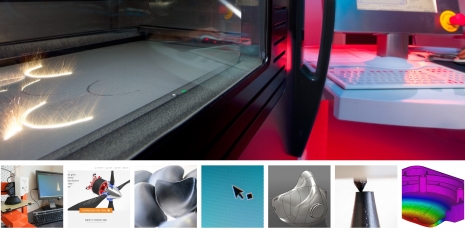
With all the hype on 3D printing in the media, you may think the next industrial revolution is already here. Noel Leeming would have you believe you can print everything you need at home, with a click of a mouse thanks to their latest offering of 3D Printers. 3D printing is constantly making inroads on how we test, iterate and manufacture. However, will the promised 3D printed future be here by christmas, or is still some time off? What is the reality of using them in the product development process and most importantly, has the wave reached New Zealand?
The mainstream 3D printing boom can be attributed to many things, but none more than lapsing IP protection . The first 3D printer which utilised Stereolithography (SLA) technology was developed in 1984 by Chuck Hull, who went on to found one of the biggest 3D printing companies today, 3D systems. Conversely, the other major player in the 3D printing industry, Stratasys was founded in 1989 by S.Scott Crump after his invention of Fused Deposition Modelling (FDM) 3D printers. These patents held the key to the market for years, with printers being extremely expensive allowing little exposure to the consumer and pro-sumer market.
When FDM patent expired in 2009, the boom began. Over the last 5 years, we have seen FDM printers drop dramatically in price and the options to the consumer increase 10 fold as companies such as Makerbot capitalise on the in-demand technology. Makerbot is currently the most successfull product line for Stratasys.
2014 has been slated as a big year for 3D printing, with key patents around Selective Laser Sintering (SLS) and SLA technology expiring throughout 2014 and the following years. Last year, Wired summed up the key patents in an article while Quartz helped to outline what this lifting of IP protection is doing to the industry and what it means for you at home. Tech research firm Gartner is predicting worldwide sales of 3d printers to rise to 2.3 million units per year with spending predicted jump up to 13.4 billion by 2018
With all this buzz around patent expiration, there still will always be patents queuing up to fill their space with newer technologies patented for years to come and new variations of printing always being released. However the ability for start-ups and the hacker community to get their hands on this technology can only be good for the industry.
The idea that the latest home 3D printer will be creating all your household wares is just not true at this stage in the game. 3D printing is still missing a breakthrough consumer model, with the price being to high and the quality not high enough. Unless you are involved in the hacker space or want to spend the time understanding your 3D printer, there is still a task ahead of you to getting perfect prints from an FDM maching. As Jeff Kowlaski from Autodesk explained aptly “Why are so many 3D printers transparent? So you can watch your print fail.”
SLA has begun to emerge into the home market, with desktop SLA machines such as Form 1 + bringing high resolution parts to your desktop. However they have limited materials and small build volumes and purchasing one can cost over $4000
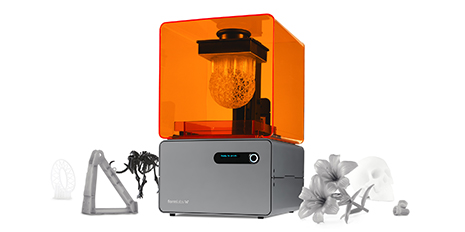
Formlabs latest 3D printer, the Form 1 +
Ricoh is taking a step in the right direction, supplying 3D printers for lease alongside their "2D" printing range for businesses. This is the model the industry should be looking to adopt. Until 3D printers have a higher success rate, businesses don't have time to maintain and support the machines. A fully supported lease agreement will help business do what they do best and not focus correcting and maintaining 3D prints.
Digital Manufacture is slowly becoming a reality for some companies, with 3D printing becoming a viable option for production as the technology and material improve. Designing parts for 3D printing means breaking away from the rules of traditional manufacture. In whatever we design, we are constrained by the method of production, whether that be injection moulding, rotational moulding, casting or any other. The huge range of printing methods available is enabling design freedom stretching over many industries , from automobile and aerospace to consumer products.
Palmer Design and Manufacture (PDM) is one company based in Tauranga who is realising mass manufacture for 3D printing. Running high end multijet and FDM 3D printers, owner Andrew Palmer see's the core of his business now in re-designing and printing parts for economical mass manufacture. He has manufactured parts for the agricultural, horticultural and electrical industries with parts still performing in the field 2-3 years on. Re-designing parts to utilise printers most efficiently can dramatically reduce cost in projects that are constantly changing and can't afford the capital cost for tooling. 3D printing is most viable in small run production, up to 20,000 units, with smaller parts having the best success at keeping cost and manufacture time down. Many 3D printing companies want to live in the hayday of expensive 3d printing, but the reality is if people want high volumes, companies need to drive the potential of mass manufacture by getting the printers running 24/7 and dropping the price to allow the customers to reap the benefits.
Andrew has also worked along side another leading 3D printing company based in Tauranga, TiDA. CEO Warwick Downings team work with high value SLM machines to develop the use of titanium and other metals in high end products. Much of their research looks into advancing powdered metallurgy techniques for 3D printing in titanium and other metals. With their ability to do short manufacturing runs, TiDA has allready developed titanium products for industry, including knifes for Team New Zealand and gun supressors for Oceania Defence.
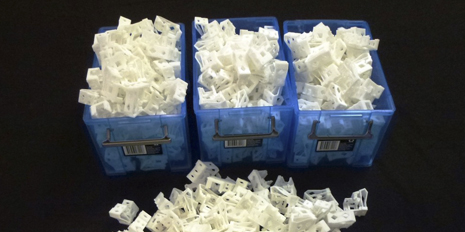
rgr
The amount 3D printers and materials available seem to be endless, and figuring out which is best for you in your design process can have an impact on the cost of your parts and their ability to perform. Whether you're a student, researcher, engineer, designer or just a hobbiest, you'll want to know what these technologies can do for you, and what the state of the industry is in New Zealand.
FDM (FFF, PJP)
Fused Deposition Modelling, Fused Filament Fabrication, Plastic Jet Printing
FDM utilises filament based 3D printing, which is the most common 3D printing available. The process involves heating and extruding filament, building a part up layer by layer. The process means the finish shows layer lines prominently, with an average resolution of around 100 microns. With such a low barrier to entry, companies are cropping up nearly every day offering low cost FDM printers. Professional FDM printers with heated build chambers offer the best chance of success, keeping parts at a constant temperature to stop warping and failed prints
Why Would You: Quick prototyping, Form and size test, Experimentation, Large mouldings. Huge range of materials, Cheap, Availability, Quick turnaround.
Why Wouldn’t You: Can't do complex parts, Low Resolution, Not good for fitting tight tolerance parts together, Rough surface finish, High variability in success.
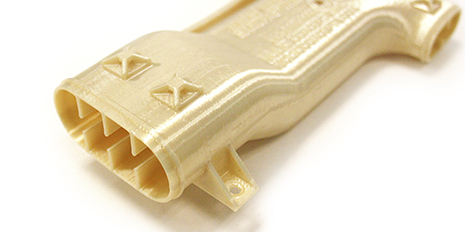
An aerospace duct by SolidConcepts
SLA (DLP)
Stereolithography, Digital Light Projection.
These processes utilise UV Cured photo-reactive resin (liquid photopolymer) that is cured via a UV beam using a either a projector or laser. This process creates a super fine resolution, with machines going fewer than 10 microns in resolution. This means machines can create smooth surface finishes and high detail. The amount of materials is limited and is usually restricted to specific resins formulated for your printer. However there are clear, coloured and flexible resins available as well as plastic simulants.
Why Would You: High resolution, Good for complex parts, Materials can simulate a range of plastics, Smooth finish, Watertight, Translucent materials.
Why Wouldn’t You: Parts become brittle over time because of "Over-curing", Small bed sizes, Long print time. The proprietary and limited number of materials means materials are expensive, Large solid objects would not be recommended, Limited funtional use.
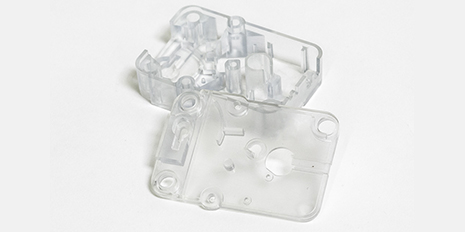
SLS (DMLS)
Selective Laser Sintering, Direct Metal Laser Melting.
The SLS process creates parts utilising powdered plastic that is sintered together by laser, layer by layer to create a solid part. DMLS is the equivalent process for metal, which fuses metal powder on a molecular level, layer by layer. This allows the porosity of the part to be controlled. Plastic objects are built up utilising unused powder as support, while metal parts usually require a support structure. SLS prints are strong and durable, and make them the best fit for testing and end use applications. SLS is stronger than SLA, but not as strong as moulded parts. The majority of plastic materials are limited to nylon based powders, with the most common being a Nylon 12 Polyamide or Glass Reinforced Nylon 12 Polyamide.
Why Would You? Strong functional prototypes that can withstand impact and temperature. Snap clips and live hinges. Larger Parts, Complex parts that would traditionally require lots of support
Why Wouldn’t You? Rough surface finish, difficult to paint, not good for miniature details, plastic porous/not watertight, Metal extremely expensive and difficult to print complex parts, Most metal parts require support.
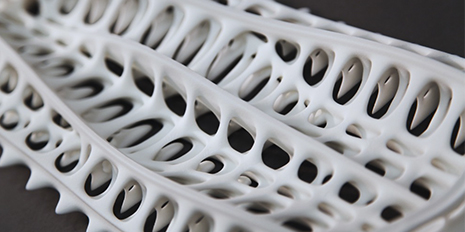
Costae made using and SLS Printer, by Brian Hamilton
SLM, EBM
Selective Laser Melting, Electron Beam Melting
SLM and EBM are similar processes used to 3D print metal from powder. Instead of sintering, the metal powder is fully melted by either a laser or electron beam, layer by layer to form extremely strong solid part. This process is particularly good for single component materials such as aluminium or pure titanium with one melting point. This allows for up to 99.9% density in parts with great structural qualities. SLM/EBM parts will come out with an investment casting type finish, but can be polished.
Why Would You? Strong, functional and high density parts, good for complex geometries.
Why Wouldn’t You? Limited availability, high cost, slow build time, majority of machines have small build chambers.
MultiJet/Polyjet
MultiJet (3D systems) and Polyjet (Stratasys) Utilises a curable liquid photopolymer that is jetted via a large inkjet head and UV cured as it is laid down. Support and material is laid down at the same time, which can be a easily removable gel or wax. Both options have a large range of rubber and plastic materials are the technology is beginning to take over SLA as the high precision printing type of choice. A porject done at Victoria University for a final year project involving multimaterial 3D printing prosthetics can be viewed here
Why Would You? Super high resolution, Great for miniature details, Easy to remove gel or wax like support, Large bed's available, Large range of materials, Colour and multi-material 3D printing through Stratasys Connex printers .
Why Wouldn't You? Both processes still involve UV resins that can become brittle from overcuring, Many of the materials need a jump in their chemistry before they can be used in end consumer products, Strength not that of SLS or FDM parts, High cost.
The reality is that the commercial 3D printing on large scale still hasn't reached New Zealand. The ability to get high quality prints on short time frames is still limited. Below is a quick round up of the most prominent companies and universities and their printing technology available for commercial use in New Zealand.
3Design(Tauranga): FDM and Multijet
Auckland University of Technology (AUT) 3D printing Lab: SLS and SLM
CPIT (Christchurch): Multijet
One.61 Design (Invercargil) FDM, Multijet
Palmer Design and Manufacture (Tauranga): FDM, Multijet
Plastic Design Technologies: SLA, SLS
RAM/TiDA (Tauranga): SLM
Stratatec (Christchurch): FDM, Multijet
Victoria University of Wellington: Polyjet
Wintec SLA
As with 3D printing technology, 3D printing companies are popping up all over town, and it can be hard to track. The low cost FDM printer means there are a number of smaller companies utilising these to print parts across New Zealand. Multijet printing is becoming the new baby of 3 printing companies because of its high resolution and huge range printers at different price points.
Some companies may have partner companies in Australia or China that can do more advanced printing methods if required. However, be wary of your NDA agreements if you are going to external suppliers as they can be separate from the company you are dealing with. If you need more advanced prototyping options, your best bet is Australia.
QuickParts - 3D systems - Australia/US
Objective3D/Red Eye - Stratasys – Australia
Quickparts and Objective/Red Eye in Australia are the next step up in prototyping. They offer complete prototyping suites with full 3D printing and finishing options. Depending on the type of printing technology and material you want will depend on what company you go with.
No matter what stage your are in the development process there are still some key factors you need to be aware of before sending your parts away or pressing print.
Build Size: The size of bed can be a real issue, with many 3D printers available in New Zealand having small bed size's. FDM parts can be split and then glued together but this comprises the strength of a model. Your standard bed size is around 250 to 300 square mm. There are bigger options available, but you will have to go offshore.
Cost: The cost of 3D printing depends on the size of your part, the number of parts and the material you are printing in. The cost of printing is usually calculated per build, so if you filling up the build plate will be much more cost effective than having a small object on an empty build plate. With New Zealand at the end of a long supply chain, proprietary resins for SLA and Polyjet/Multijet printing are expensive. SLA and Polyjet/Multijet prints can get especially expensive if you are doing large solid parts, as parts build with a solid fill with no honeycombing.
Support: The amount of support varies depending on the complexity of the model, and can be a hassle to remove. Understanding how to position your model for the least amount of support will reduce time and cost and increase the chance of success. Utilising dissolvable support materials or polyjet/multijet printing can make your life a whole lot easier when creating complex parts.
Materials: The material chemistry of 3D printing has come a long way to simulating engineering plastics and metals. Whether those materials are available to you however is a different story. With resin costs being so high, many companies will run only one or two resins because changing materials over constantly means purging your machine, which can cost hundreds of dollars. Even Quickparts don't offer their entire suite of 3D Systems materials in house because of the expense. FDM filaments are far cheaper than any other materials to date but are not optimised for specific machines, so it can take time to get them running smoothly with no gaurantee of success. All SLS powders in New Zealand are nylon polymide derivatives, with very little range to choose from.
There is no one stop printing solution. Different printers run different materials at different resolutions with different results. With the landscape changing so quickly, its likely this post will be out of date tomorrow. Every company will offer something different, so it's important to get in a conversation with a range of companies to see who can best suit your needs in the time you have. What printing do you have experience with, and what/who do you use to get the best results? Are you outsourcing printing for one off prototypes, looking to mass manufacture parts or looking to buy a printer for in-house work? Let us know in the comments what you think about 3D printing and where it is going.
Comments
What's the future of 3D
So there are a number of
So there are a number of options people have to get 3D printed models without having to have studied the depthsof a parametric CAD modeller. The most popular trend at the moment is the 3D printing marketplace, such as Thingiverse and Grabcad. These are expanding as the industry grows, and the number of parts that are now online for you to download and print at home is immense. Online marketplaces such as Shapeways also offer a similar service, where artists and designers will upload their files for you to buy 3D printed by Shapeways. If the 3D printed home is to be a reality, a likely proposition is that you will be able to buy product part files online and print them at home. For large companies, releasing design files to the world wide masses is a tricky conundrum. You give people the convenice to pay and print, repair and replace parts at home, but open up your design files to a potential risk of online piracy.
There are also other options if you want a customised. There are many current online interfaces that will allow you to start off with designs and then modifiy them parametricallty with a number of control sliders. These tools use underlying algorhythims and parametric modelling for you to easily adjust parameters of the design for a custom piece without the needed knowledge of CAD. Mattermachine and Nervous system's custom jewlerry are good examples of these online customisation tools.
There are a number of easy to use CAD programmes for people wanting to deign their own parts. Tinkercad from Autocad is the best example of this, with a very simple and intuitive workspace for people to get models whipped up for printing in minutes. Shapeways give a good list of free modelling software for people to try at home.
Finally, there will always be a market for those who just want something designed. There will always be CAD modellers for hire, it just depends what level of design you need. More often than not, 3D printing companies will offer design services, from CAD to part optimisation for 3D printing.
Post new comment